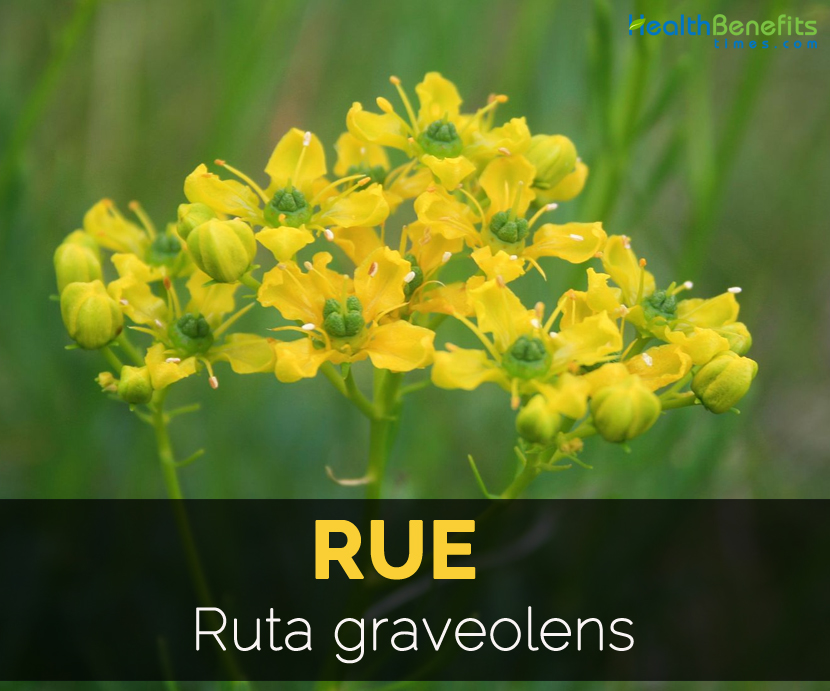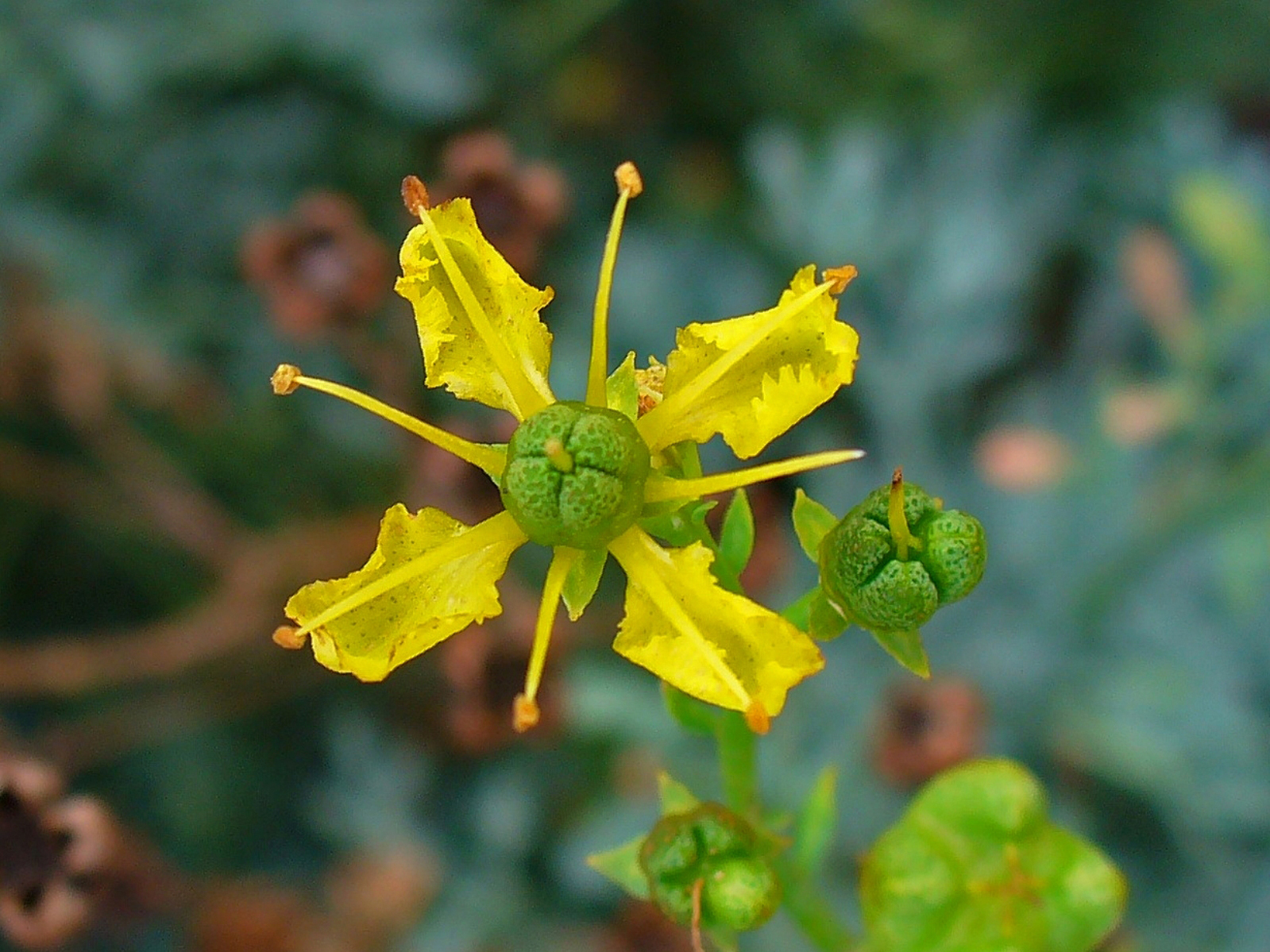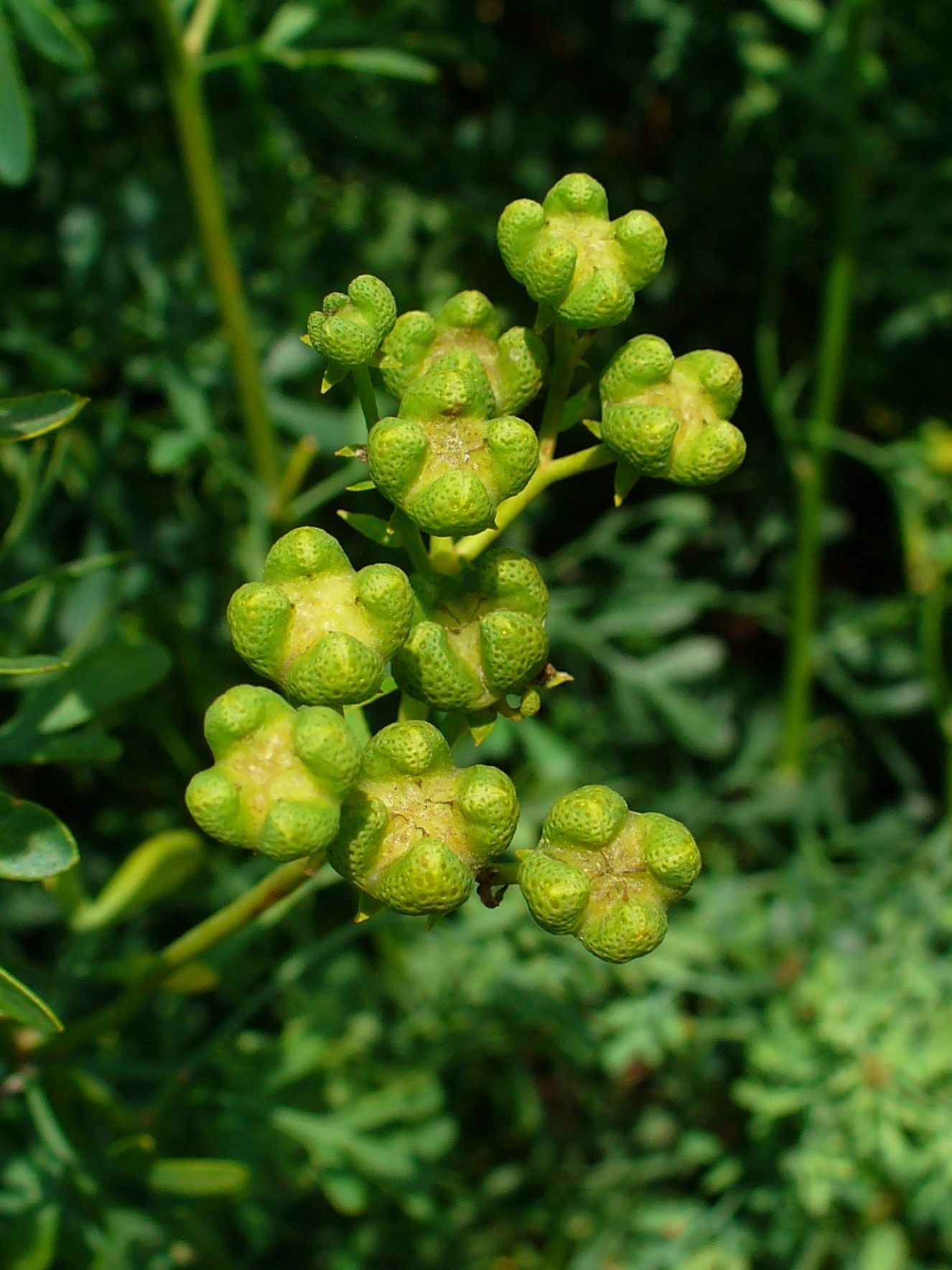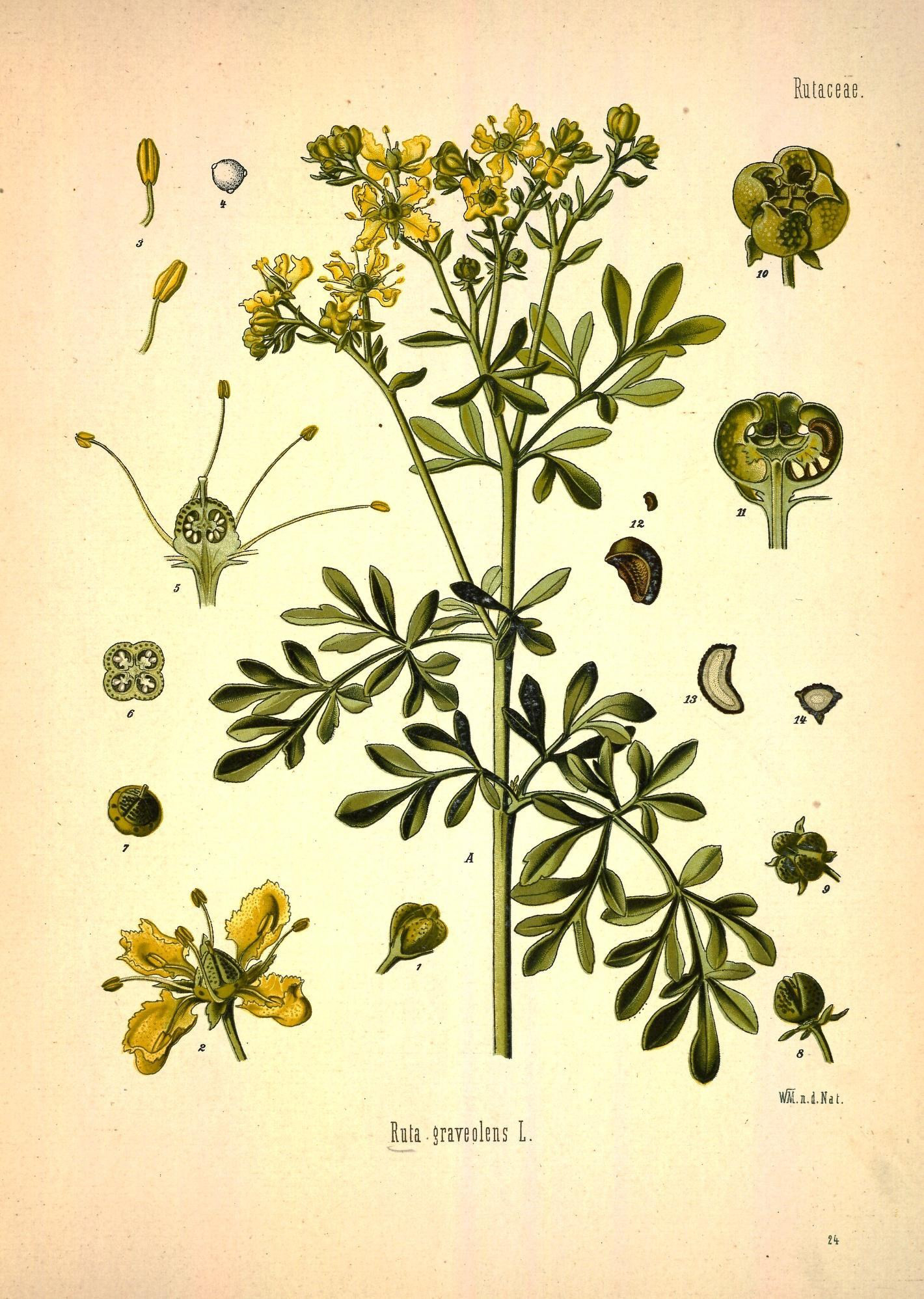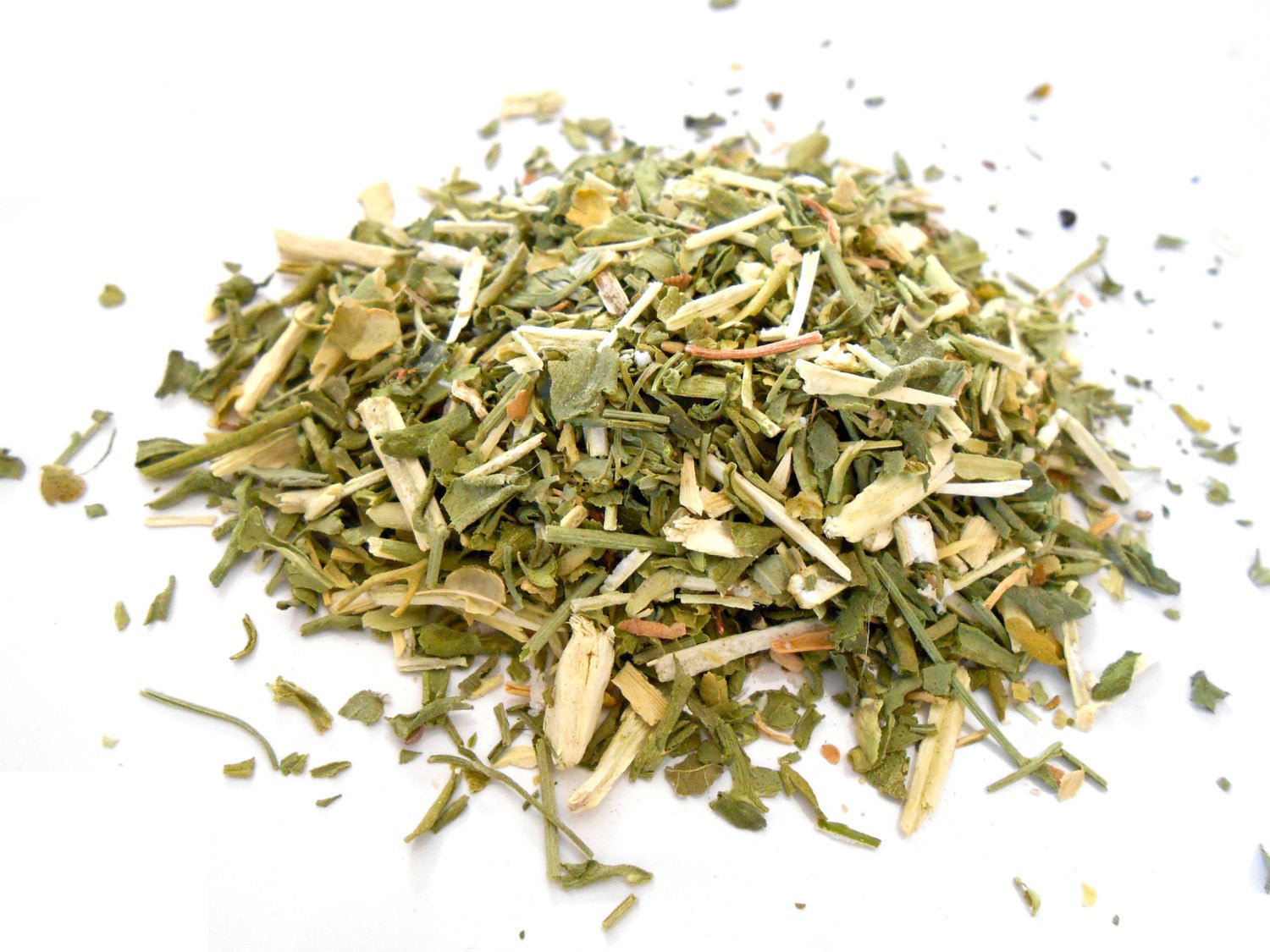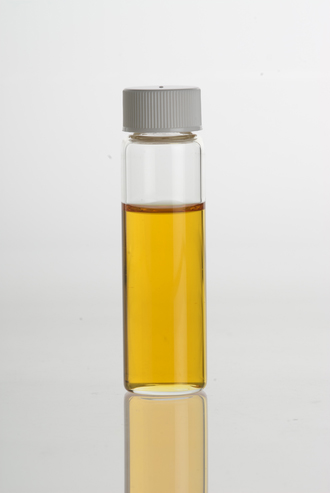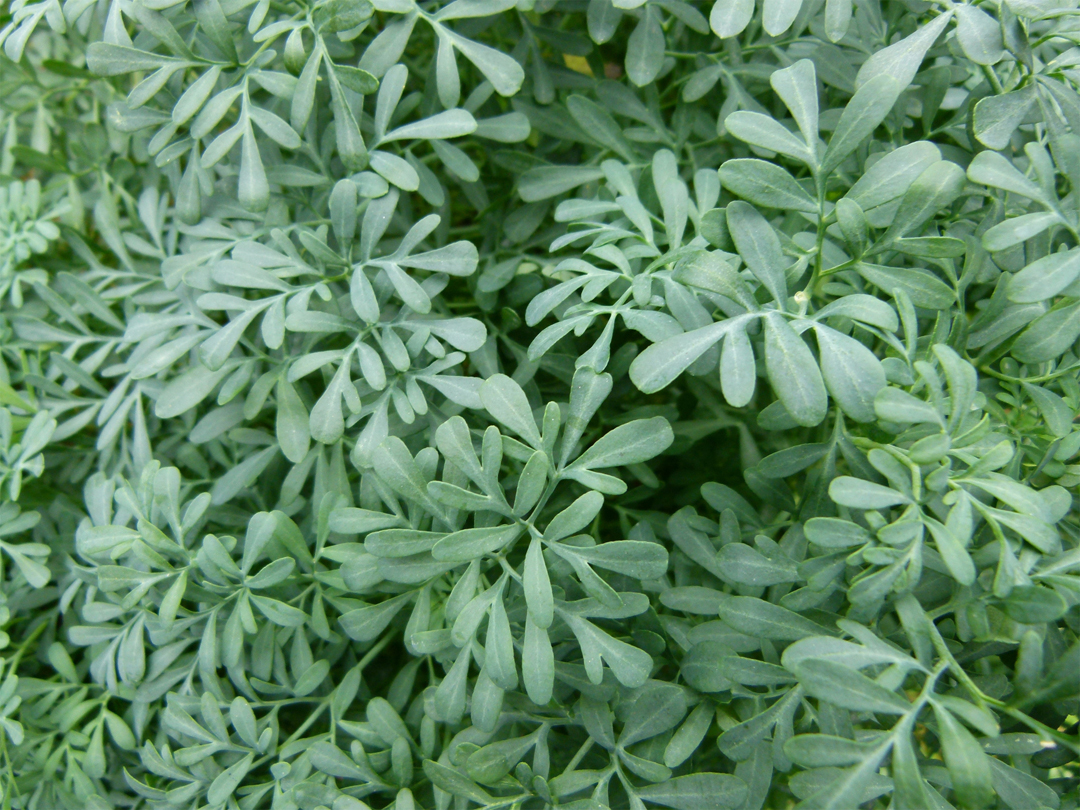The small evergreen subshrub is 0.6 to 0.9 meters tall and almost as wide. Stems are woody near the base but remain herbaceous nearer tips. Leaves are 7.6 to 12.7 cm long, dissected pinnately into oblong or spoon shaped segments. The flowers are small, yellow forming in clusters and appear in midsummer. Each flower is 1.3 cm across with four concave notched petals. Fruit is a textured capsule divided into pointed lobes.
Health Benefits of Rue
- Anti-fungal
Rue assists the body to combat against fungal infections such as athlete’s food and dermatitis. Use the rue directly on the skin depending on the severity of infection especially one suffering from athlete’s foot. It provides relief from itchy skin.
- Clear skin
Rue has anti-fungal properties that help to cure de-complexion of the skin and offers beautiful and clear skin. The anti-oxidant properties ensure that skin wards off free radicals which causes premature ageing of the skin.
- Eliminates lice
The essential oil and extracts which are often used to eliminate lice infestation. Its regular use repels pesky little parasites from hair.
- Acts as a sedative
It is effective to calm hysteric and epileptic attacks due to its sedative properties. It soothes nerves by inducing numbness as it is neurotoxin.
- Anti-bacterial activity
The anti-bacterial properties help to eliminate bacteria. The tea prepared with this herb combat urinary tract, colon and intestine infections. It prevents the chances of food poisoning and salmonella.
- Anti-Spasmodic
Rue is beneficial for those suffering from muscle pain. It is a remedy for muscle pain, menstrual cramps and anxiety.
- Anti-Inflammatory
Rue lowers inflammation caused by arthritis. Daily intakes of 1 to 2 cups of Rue herb tea assist to ease stiff muscles and relieve joint pains.
- Treat fungal infections
Rue herb combats skin issues and skin infections caused by fungus. The common fungal infections include athlete’s foot and nail fungus.
- Calm nerves
The herb has calming properties. It provides relief from tension and anxiety. The herbalist uses it to treat nervous headaches, dizziness, general tension and anxiety. Tea offers sound sleep.
- Promotes menstruation
Rue has emenagogue properties that stimulates menstruation and promotes regularity of woman’s cycle.
Medicinal uses
- The herb is useful for hysterical affections, croupy affections, coughs, flatulence, colic and acts as a mild stomachic.
- Apply the leaves eases the severe pain of sciatica.
- Apply the fresh leaves to temples to provide relief from headache.
- Applying the plant decoction to the chest helps chronic bronchitis.
- It is used for treating eye problems, dermatitis, rheumatism, inflammatory diseases and pain.
- Locals use it with honey for treating tremors, paralysis, nervine disorders and joint pain.
- Use the decoction to relieve flatulence, colitis and flatulent colitis.
- Use the leaves infusion as nasal drop for treating infantile paralysis.
- Use it in form of poultice for dislocations, rheumatic pain, varicose veins, tendon strains and skin conditions such as eczema and psoriasis.
- The decoction stimulates menstruation.
- It is also used for stiff neck, gastric disorders, headache and dizziness.
- Infusion is used for treating flatulence, coughs and hysterical affections.
- The plant juice is used to treat earaches.
- Chew the leaf to provide relief from nervous headaches, giddiness and palpitations.
- It is used for treating varicose veins and improves eyesight.
- Brew tea from the leaves and use it as a body wash to kill lice.
- It has anti-fungal properties that help in treating fungal infections of skin such as dermatitis and athlete’s foot.
- It provides relief from stomach cramps and also eases varicose veins.
- It eliminates intestinal worms.
Culinary uses
- Seeds are used as porridge.
- Add the bitter leaf to eggs, fish, cheese or mixed with damson plums and wine for producing meat sauce.
- It is used as a flavoring ingredient in Old World beers.
- It is used as a cooking ingredient in North African cuisine.
Side effects
- The use of rue extracts in high doses causes vomiting, violent gastric pain, systemic complications and even death.
- The herbal preparations made from it cause severe phytophotodermatitis that results burn like blisters on the skin.
- When used in large doses, it is toxic and also causes miscarriages.
- Use it with caution.
- It might cause photo toxicity when applied to skin with sun exposure.
- Leaves can cause blistering.
- May cause photo toxicity in some individuals – when applied to the skin with sun exposure, the oil and leaves can cause blistering.
- It causes the minor side effects such as increased sensitivity to sun exposure, dizziness, spasms, rashes, mood changes, sleeplessness and stomach irritation.
- People with stomach or intestinal problems such as ulcers, colitis and inflammatory bowel disease should avoid as it could worsen the condition.
- Never apply the substance directly to the skin without carrier oil.
Rue Preparation
- Rue Tea
1 teaspoon dried crushed leaves
½ cup boiled water
Steep for about 15 minutes and then strain.
Dosage: ½ cup per day maximum
- Rue oil
1 tablespoon crushed dried leaves
½ cup olive oil
Simmer covered for about 30 minutes. Strain and store it in a sealed container.
References:
https://www.itis.gov/servlet/SingleRpt/SingleRpt?search_topic=TSN&search_value=29002#null
http://www.missouribotanicalgarden.org/PlantFinder/PlantFinderDetails.aspx?kempercode=b714
https://botanical.com/botanical/mgmh/r/rue—20.html
https://en.wikipedia.org/wiki/Ruta_graveolens
https://pfaf.org/user/Plant.aspx?LatinName=Ruta+graveolens
https://www.herbwisdom.com/herb-ruta-rua.html
http://www.herbgarden.co.za/mountainherb/herbinfo.php?id=41
http://heritagegarden.uic.edu/rue-ruta-graveolens
https://www.stylecraze.com/articles/benefits-of-rue-herb-for-skin-hair-and-health/#gref
https://healthyfocus.org/benefits-of-rue-herb/
Comments
| Rue Quick Facts | |
|---|---|
| Name: | Rue |
| Scientific Name: | Ruta graveolens |
| Origin | Mediterranean region and Canary islands |
| Colors | Grayish-brown |
| Shapes | Capsule |
| Taste | Intense bitter |
| Name | Rue |
|---|---|
| Scientific Name | Ruta graveolens |
| Native | Mediterranean region and Canary islands |
| Common/English Name | Rue, Common rue, Herb-of-grace |
| Name in Other Languages | English: Common rue, Rue, Garden rue, Herb of grace, rue; German: Wein-Raute, Weinraute; Portuguese: Arruda; Spanish: Ruda, Ruda de monte; French: Rue fétide, rue officinale Swedish: vinruta; Transcribed Korean: unhyang; Hindi: Rue, Sudab, Sadabin, Sanool, Saatri; Urdu: Sudab; Arabic: Sudab, Suzab; Persian: Satap; Greek: Fejan, Safayan; Sanskrit: Sadapah |
| Plant Growth Habit | Glabrous, woody-based, shrubby perennial |
| Soil | Well-drained |
| Plant Size | 2 to 2 1/2 feet in height |
| Leaf | Pinnately divided, 3-5 inches long |
| Fruit shape & size | Capsule |
| Fruit color | Grayish-brown |
| Aroma | Strong, heavy and unpleasant |
| Taste | Intense bitter |
| Seed | Ovoid |


